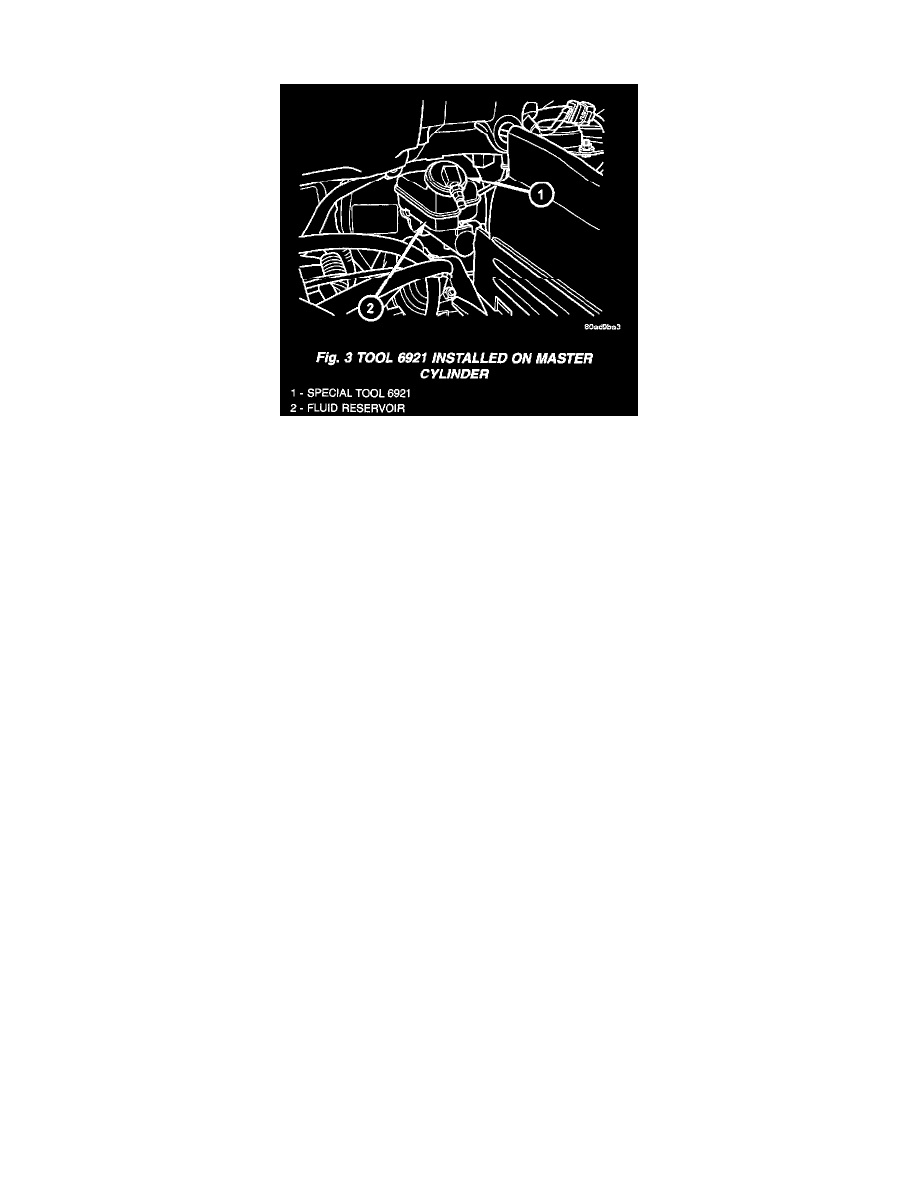Grand Caravan FWD V6-3.8L VIN L (2001)

Follow pressure bleeder manufacturer's instructions for use of pressure bleeding equipment.
1. Install the Adapter Master Cylinder Pressure Bleed Cap, Special Tool 6921 on the fluid reservoir of the master cylinder. Attach the fluid hose from
the pressure bleeder to the fitting on Special Tool 6921.
2. Attach a clear plastic hose to the bleeder screw at one wheel and feed the hose into a clear jar containing fresh brake fluid.
3. Open the left rear wheel bleeder screw at least one full turn or more to obtain an adequate flow of brake fluid.
CAUTION: "Just cracking" the bleeder screw often restricts fluid flow, allowing only a slow, weak fluid discharge of fluid. This practice will
NOT get all the air out. Make sure the bleeder is opened at least 1 full turn when bleeding.
4. After 4 to 8 ounces of brake fluid has been bled through the hydraulic system, and an air-free flow is maintained in the hose and jar, this will
indicate a good bleed of the hydraulic system has been obtained.
5. Repeat the procedure at all the other remaining bleeder screws.
6. Check pedal travel. If pedal travel is excessive or has not been improved, enough fluid has not passed through the system to expel all the trapped
air. Be sure to monitor the fluid level in the pressure bleeder, so it stays at a proper level so air will not enter the brake system through the master
cylinder.
7. Perform a final adjustment of the rear brake shoes (when applicable), then test drive vehicle to be sure brakes are operating correctly and that
pedal is solid.
